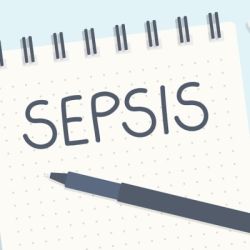Researchers from the Medical University of South Carolina (MUSC) have identified a novel biomarker that could revolutionise sepsis treatment. Sepsis, a life-threatening condition triggered by the body's extreme response to infection, is a leading cause of death in ICUs, often resulting in organ damage and failure.
In a recent study published in Frontiers in Immunology, the MUSC researchers revealed that the severity of sepsis can be predicted by analysing the contents of extracellular vesicles (EVs), membranous structures shed by cells into the bloodstream.
Study researchers focused on EVs due to their abundance in sepsis, produced in large numbers by white blood cells and platelets. These EVs carry proteins and RNA that can alter the function of other cells they encounter. The researchers found that when modified cells traverse the walls of leaky blood vessels during sepsis, organ damage can occur, leading to complications such as acute kidney injury (AKI) and acute respiratory distress syndrome (ARDS).
Studying EV content can provide a comprehensive picture of sepsis severity beyond just immune cell tracking. Unlike immune cells, EVs are released by various cell types, making them capable of providing insights into potential organ dysfunction or damage occurring throughout the body.
The team observed higher levels of specific enzymes and lower levels of a particular RNA molecule in EVs from septic patients compared to critically ill non-septic patients and healthy individuals. Moreover, EVs associated with cell injury were linked to the development of ARDS, and those showing a decline in specific RNA levels were associated with increased mortality from ARDS and AKI.
While further validation and larger cohorts of septic patients are needed, the researchers are optimistic about the potential of EV content as a dynamic marker for sepsis. They envision a future where a simple blood test, a liquid biopsy, can be utilised to collect and analyse EVs, thereby predicting sepsis severity and enabling personalised treatment approaches for each patient.
Though obstacles remain before these biomarkers can be used in clinical settings, the availability of technology to study EVs presents a promising opportunity for advancing progress in this field. By delving into the proteins and RNA carried by EVs, researchers hope to gain deeper insights into sepsis and improve outcomes for patients facing this life-threatening condition.
Source: Medical University of South Carolina
Image Credit: iStock


















